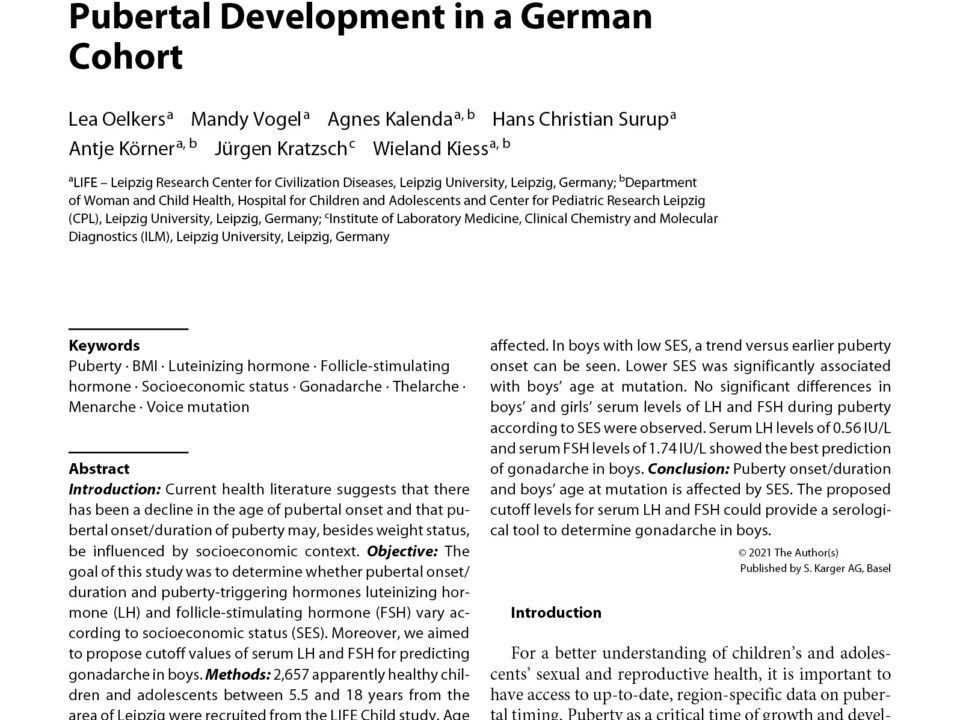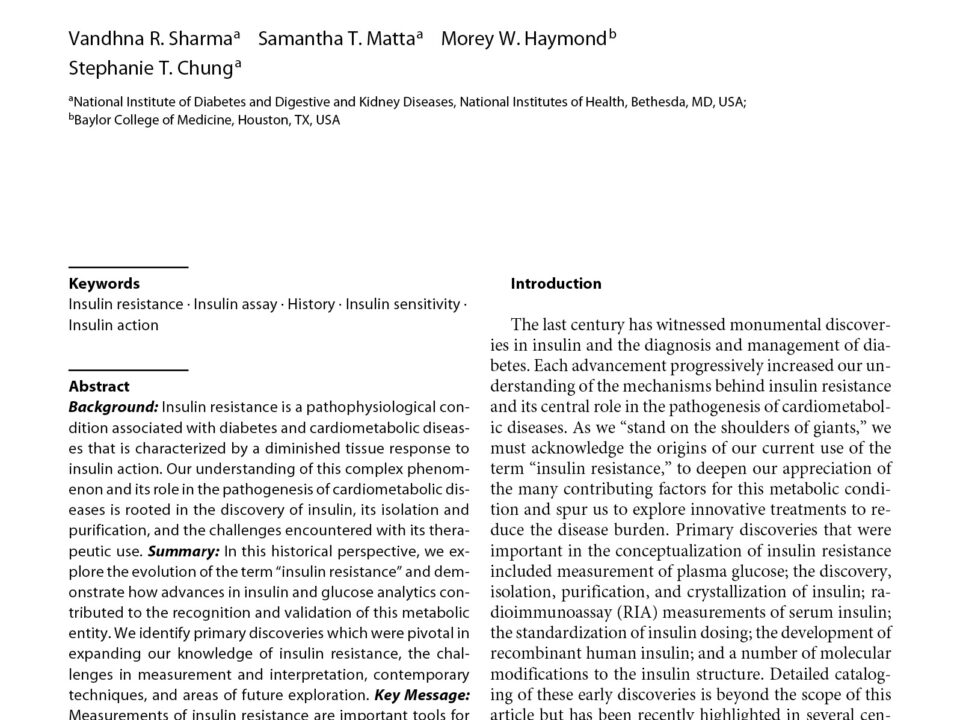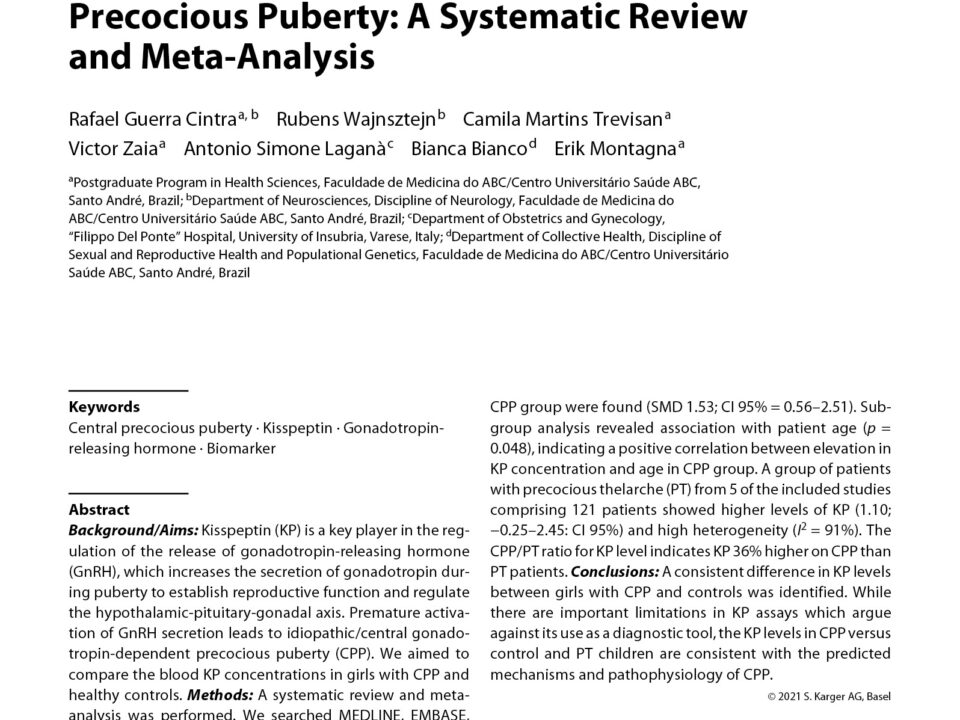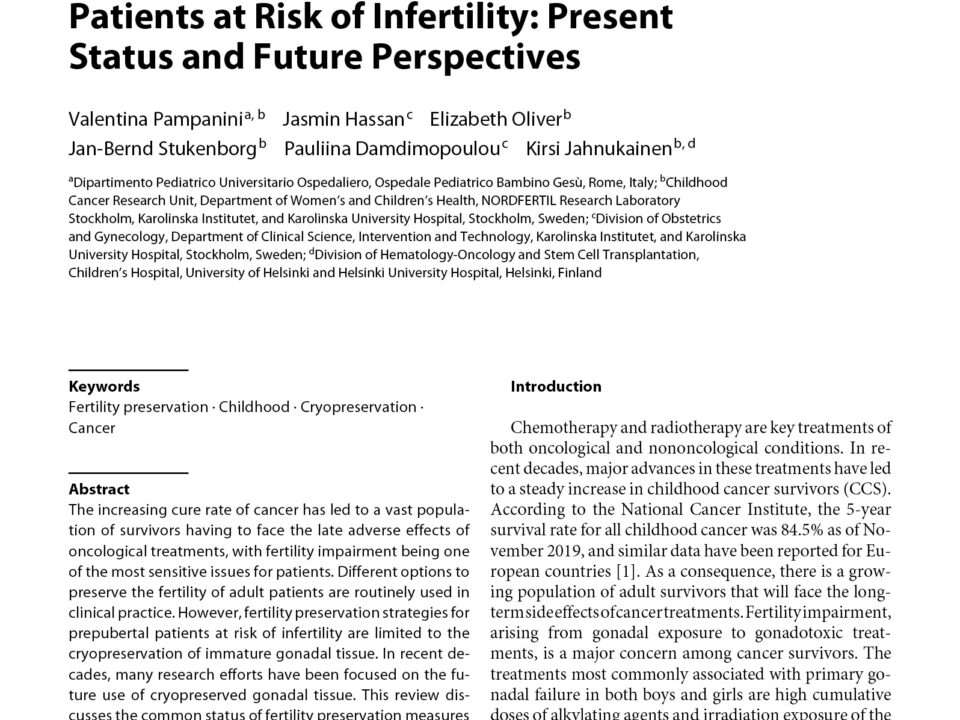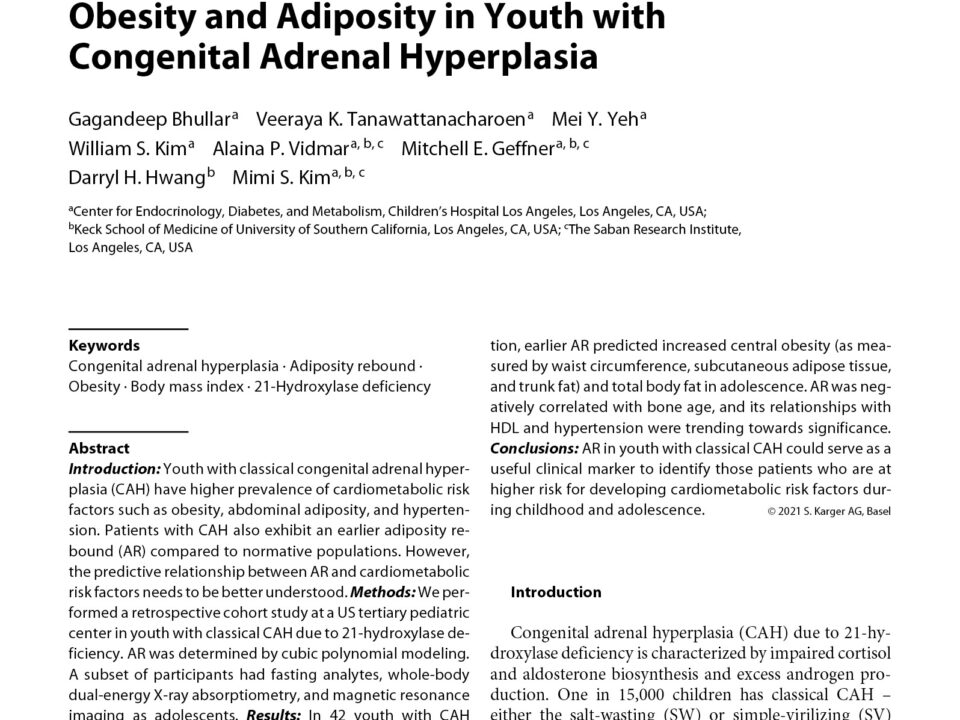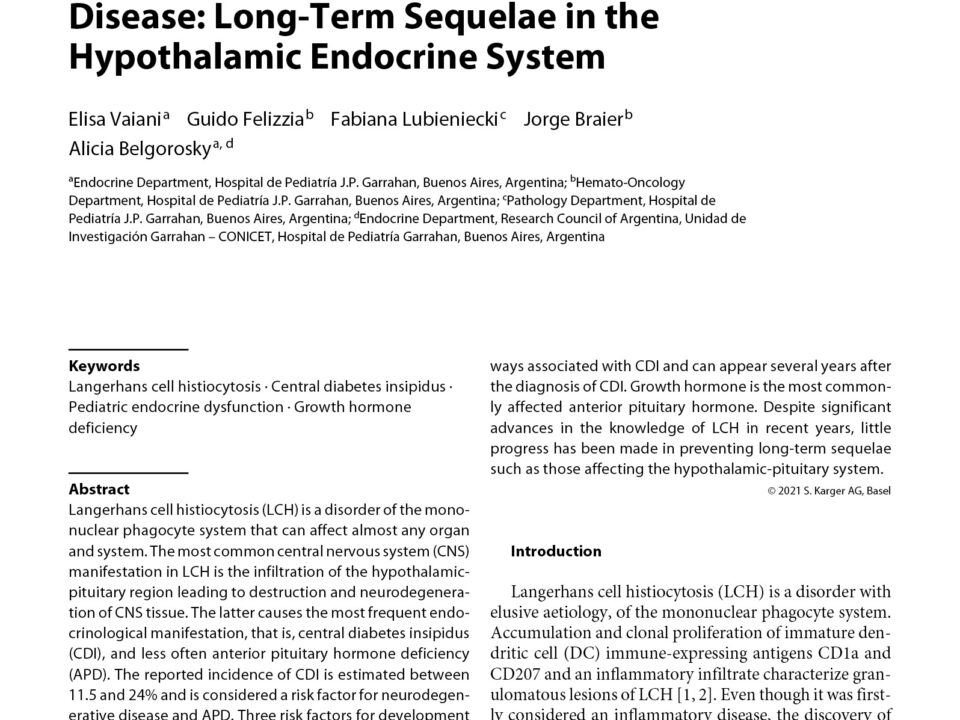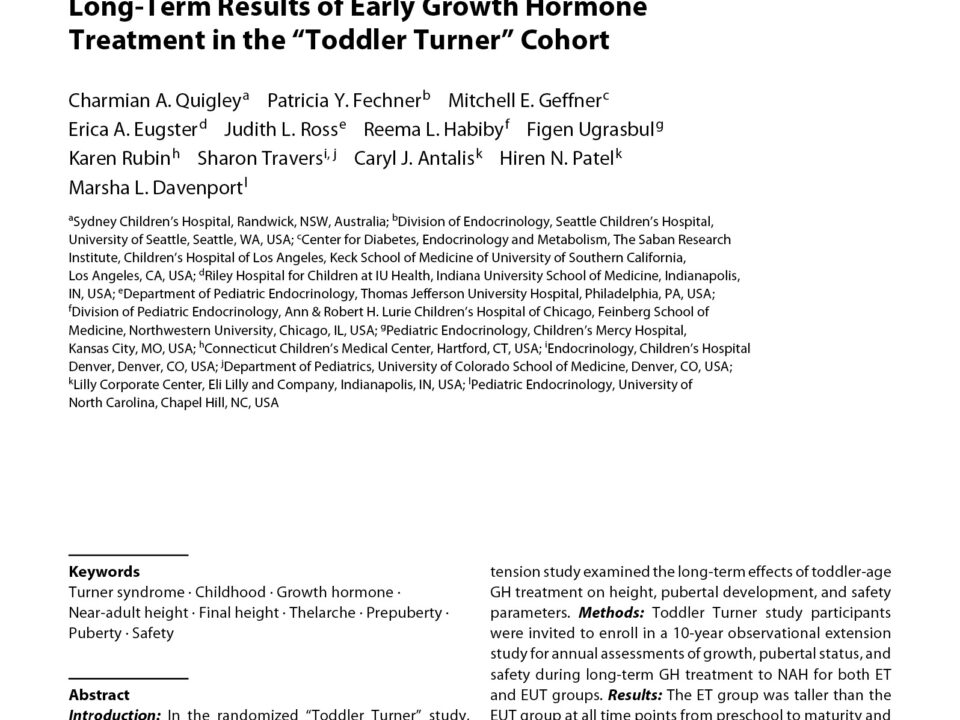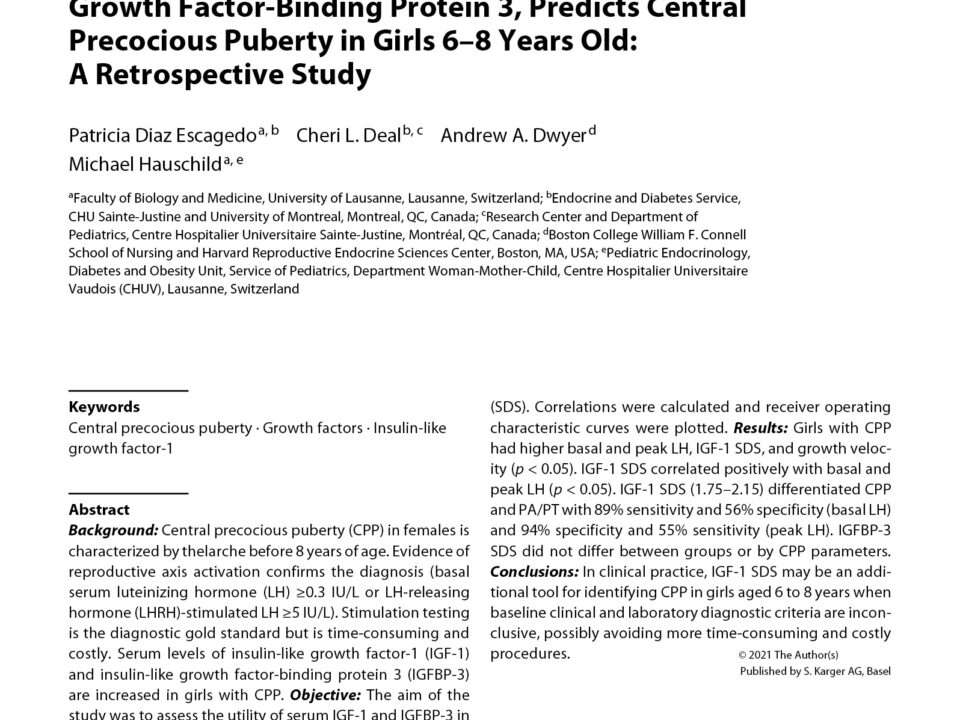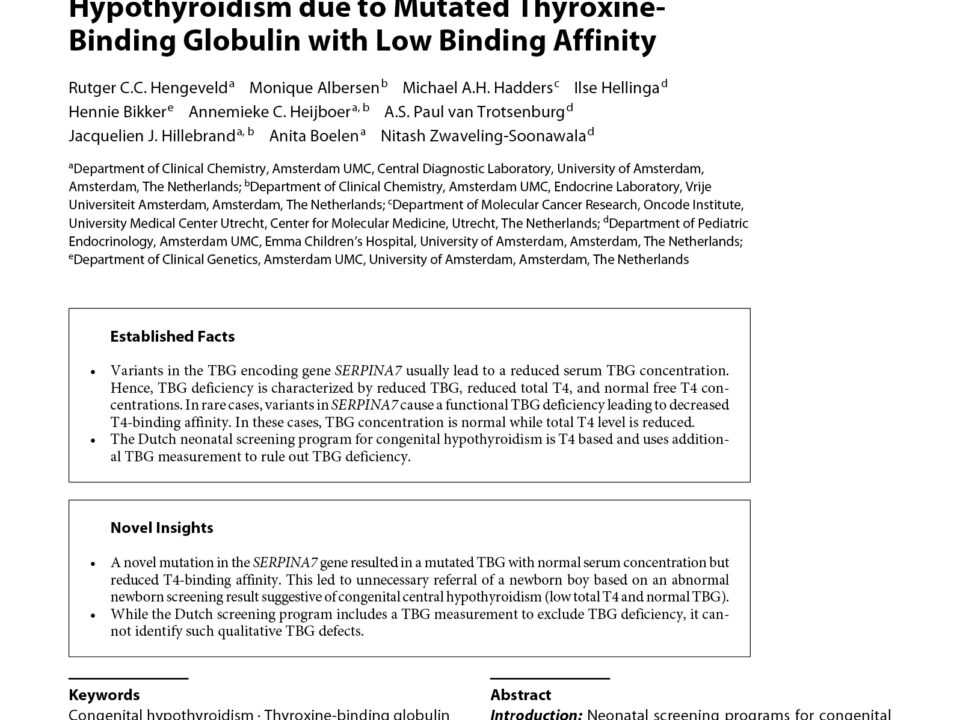December 13, 2022
Introduction: Current health literature suggests that there has been a decline in the age of pubertal onset and that pubertal onset/duration of puberty may, besides weight status, be influenced by socioeconomic context. Objective: The goal of this study was to determine whether pubertal onset/duration and puberty-triggering hormones luteinizing hormone (LH) and follicle-stimulating hormone (FSH) vary according to socioeconomic status (SES). Moreover, we aimed to propose cutoff values of serum LH and FSH for predicting gonadarche in boys. Methods: 2,657 apparently healthy children and adolescents between 5.5 and 18 years from the area of Leipzig were recruited from the LIFE Child study. Age at pubertal onset/end of puberty was given in 738/573 children, respectively. Anthropometric parameters of puberty, blood measurements of LH and FSH, and questionnaires assessing SES were evaluated. Results: Lower SES was associated with earlier thelarche and longer duration of puberty in overweight/obese girls, whereas age of menarche was not affected. In boys with low SES, a trend versus earlier puberty onset can be seen. Lower SES was significantly associated with boys’ age at mutation. No significant differences in boys’ and girls’ serum levels of LH and FSH during puberty according to SES were observed. Serum LH levels of 0.56 IU/L and serum FSH levels of 1.74 IU/L showed the best prediction of gonadarche in boys. Conclusion: Puberty onset/duration and boys’ age at mutation is affected by SES. The proposed cutoff levels for serum LH and FSH could provide a serological tool to determine gonadarche in boys.
December 13, 2022
Background: Insulin resistance is a pathophysiological condition associated with diabetes and cardiometabolic diseases that is characterized by a diminished tissue response to insulin action. Our understanding of this complex phenomenon and its role in the pathogenesis of cardiometabolic diseases is rooted in the discovery of insulin, its isolation and purification, and the challenges encountered with its therapeutic use. Summary: In this historical perspective, we explore the evolution of the term “insulin resistance” and demonstrate how advances in insulin and glucose analytics contributed to the recognition and validation of this metabolic entity. We identify primary discoveries which were pivotal in expanding our knowledge of insulin resistance, the challenges in measurement and interpretation, contemporary techniques, and areas of future exploration. Key Message: Measurements of insulin resistance are important tools for defining and treating cardiometabolic diseases. Accurate quantification of this pathophysiological entity requires careful consideration of the assumptions and pitfalls of the methodological techniques and the historical and clinical context when interpreting and applying the results.
December 13, 2022
background/Aims: Kisspeptin (KP) is a key player in the regulation of the release of gonadotropin-releasing hormone (GnRH), which increases the secretion of gonadotropin during puberty to establish reproductive function and regulate the hypothalamic-pituitary-gonadal axis. Premature activation of GnRH secretion leads to idiopathic/central gonadotropin-dependent precocious puberty (CPP). We aimed to compare the blood KP concentrations in girls with CPP and healthy controls. Methods: A systematic review and meta-analysis was performed. We searched MEDLINE, EMBASE, The Cochrane Library, and SciELO. Random-effects model and standardized mean difference (SMD) were used. Heterogeneity was assessed through I2. Meta-regression considered patient age, KP fraction, and analytical method for KP measurement. Results: The 11 studies included comprised 316 CPP patients and 251 controls. Higher KP levels in the CPP group were found (SMD 1.53; CI 95% = 0.56–2.51). Subgroup analysis revealed association with patient age (p = 0.048), indicating a positive correlation between elevation in KP concentration and age in CPP group. A group of patients with precocious thelarche (PT) from 5 of the included studies comprising 121 patients showed higher levels of KP (1.10; −0.25–2.45: CI 95%) and high heterogeneity (I2 = 91%). The CPP/PT ratio for KP level indicates KP 36% higher on CPP than PT patients. Conclusions: A consistent difference in KP levels between girls with CPP and controls was identified. While there are important limitations in KP assays which argue against its use as a diagnostic tool, the KP levels in CPP versus control and PT children are consistent with the predicted mechanisms and pathophysiology of CPP.
December 13, 2022
The increasing cure rate of cancer has led to a vast population of survivors having to face the late adverse effects of oncological treatments, with fertility impairment being one of the most sensitive issues for patients. Different options to preserve the fertility of adult patients are routinely used in clinical practice. However, fertility preservation strategies for prepubertal patients at risk of infertility are limited to the cryopreservation of immature gonadal tissue. In recent decades, many research efforts have been focused on the future use of cryopreserved gonadal tissue. This review discusses the common status of fertility preservation measures for pediatric patients undergoing gonadotoxic treatment, focusing especially on the challenges that remain to be solved in order to implement this fundamental service.
December 13, 2022
Introduction: Youth with classical congenital adrenal hyperplasia (CAH) have higher prevalence of cardiometabolic risk factors such as obesity, abdominal adiposity, and hypertension. Patients with CAH also exhibit an earlier adiposity rebound (AR) compared to normative populations. However, the predictive relationship between AR and cardiometabolic risk factors needs to be better understood. Methods: We performed a retrospective cohort study at a US tertiary pediatric center in youth with classical CAH due to 21-hydroxylase deficiency. AR was determined by cubic polynomial modeling. A subset of participants had fasting analytes, whole-body dual-energy X-ray absorptiometry, and magnetic resonance imaging as adolescents. Results: In 42 youth with CAH (45.2% female, 54.8% Hispanic, and 90.5% salt-wasting form), the average age at AR was 3.4 ± 1.3 years. AR differed by BMI-z, with youth with obesity having an earlier AR (2.8 ± 1.0 years) compared to lean youth (4.1 ± 1.3 years, p = 0.001). However, AR did not differ by either CAH form or sex. Earlier AR predicted higher BMI-z at 7 and 12 years of age. In addition, earlier AR predicted increased central obesity (as measured by waist circumference, subcutaneous adipose tissue, and trunk fat) and total body fat in adolescence. AR was negatively correlated with bone age, and its relationships with HDL and hypertension were trending towards significance. Conclusions: AR in youth with classical CAH could serve as a useful clinical marker to identify those patients who are at higher risk for developing cardiometabolic risk factors during childhood and adolescence.
December 13, 2022
Langerhans cell histiocytosis (LCH) is a disorder of the mononuclear phagocyte system that can affect almost any organ and system. The most common central nervous system (CNS) manifestation in LCH is the infiltration of the hypothalamic-pituitary region leading to destruction and neurodegeneration of CNS tissue. The latter causes the most frequent endocrinological manifestation, that is, central diabetes insipidus (CDI), and less often anterior pituitary hormone deficiency (APD). The reported incidence of CDI is estimated between 11.5 and 24% and is considered a risk factor for neurodegenerative disease and APD. Three risk factors for development of CDI are recognized in the majority of the studies: (1) multisystem disease, (2) the occurrence of reactivations or active disease for a prolonged period, and (3) the presence of craniofacial bone lesions. Since CDI may occur as the first manifestation of LCH, differential diagnosis of malignant diseases like germ cell tumours must be made. APD is almost always associated with CDI and can appear several years after the diagnosis of CDI. Growth hormone is the most commonly affected anterior pituitary hormone. Despite significant advances in the knowledge of LCH in recent years, little progress has been made in preventing long-term sequelae such as those affecting the hypothalamic-pituitary system.
December 13, 2022
Introduction: In the randomized “Toddler Turner” study, girls who received growth hormone (GH) starting at ages 9 months to 4 years (early-treated [ET] group) had marked catch-up growth and were 1.6 ± 0.6 SD taller than untreated (early-untreated [EUT]) control girls after 2 years. However, whether the early catch-up growth would result in greater near-adult height (NAH) was unknown. Therefore, this extension study examined the long-term effects of toddler-age GH treatment on height, pubertal development, and safety parameters. Methods: Toddler Turner study participants were invited to enroll in a 10-year observational extension study for annual assessments of growth, pubertal status, and safety during long-term GH treatment to NAH for both ET and EUT groups. Results: The ET group was taller than the EUT group at all time points from preschool to maturity and was significantly taller at the onset of puberty (p = 0.016), however, the difference was not significant at NAH. For the full cohort (ET + EUT combined, n = 50) mean (± SD) NAH was 151.2 ± 7.1 cm at age 15.0 ± 1.3 years. NAH standard deviation score (SDS) was within the normal range (>−2.0) for 76% of ET and 60% of EUT subjects (68% overall) and correlated strongly with height SDS at GH start (r = 0.78; p < 0.01), which in turn had a modest inverse correlation with age at GH start (i.e., height SDS declined with increasing age in untreated girls [r = −0.30; p = 0.016]). No new safety concerns arose. Conclusion: Although the ET group was taller throughout, height SDS at NAH was not significantly different between groups due to catch-down growth of ET girls during lapses in GH treatment after the Toddler study and similar long-term GH exposure overall. Early initiation of GH by age 6 years, followed by uninterrupted treatment during childhood, can prevent ongoing growth failure and enable attainment of height within the normal range during childhood, adolescence, and adulthood.
December 13, 2022
Insulin-like Growth Factor 1, but Not Insulin-Like Growth Factor-Binding Protein 3, Predicts Central Precocious Puberty in Girls 6–8 Years Old: A Retrospective Study
December 13, 2022
Introduction: Neonatal screening programs for congenital hypothyroidism (CH) have been implemented worldwide to facilitate early diagnosis and treatment. The Dutch neonatal CH screening is primarily based on the measurement of thyroxine (T4). When T4 is low, an additional thyroxine-binding globulin (TBG) measurement is performed to reduce the number of false-positive screening results due to harmless TBG deficiency. Here, we present a case of a rare functional TBG deficiency leading to a false suspicion of CH. Case Presentation: Neonatal screening in this patient revealed a decreased T4, normal TSH, and normal TBG concentration, suggesting central CH. However, free T4 was normal. DNA sequencing analysis revealed a novel, hemizygous mutation (c.139G>A) in SERPINA7, the gene encoding TBG, resulting in the substitution of the conserved amino acid alanine to threonine at position 27. Crystal structure analyses showed that this substitution has a detrimental effect on binding of T4 to TBG. Conclusions: The novel SERPINA7 variant in this patient led to a false suspicion of central hypothyroidism in the Dutch T4-based neonatal screening program. It is important to recognize patients with such TBG defects to prevent unnecessary additional testing and treatment.
